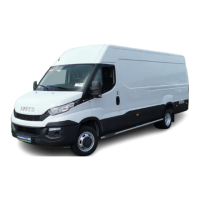8
RESCUE GUIDE ‒ Technical information
TECHNICAL INFORMATION
CNG / CNG-PETROL VEHICLES (NATURAL POWER)
– Printed 692.68.340 – 1st Ed. 04/2015
CNG / CNG-PETROL VEHICLES (NATURAL POWER)
Description
The following specifications may vary depending on the vehicle version and type:
● Number of cylinders.
● Cylinder layout.
● Presence of fuel tank (petrol).
The CNG vehicles can be recognized from the writing "CNG" or "NATURAL POWER" on the side of the vehicle and from the
presence of cylinders under the body.
Capacity
● Petrol tank (if present): 15 litres
● Total capacity of CNG cylinders: from 196 litres to 302 litres
CNG power supply system diagram
219810
Figure 8
1 Accumulator (rail)/Gas-air mixer/Temperature pres-
sure sensor
2 Electro-injectors
3 Medium pressure flexible gas pipe
4 Pressure reducer/pressure sensor
5 IAW-5SF control unit
6 Inertial switch
7 Filling valve*
8 High pressure flexible gas pipe
9 Solenoid valve with check valve*
10 Cylinder
11 Solenoid valve without check valve
12 Optional cylinder
13 High-pressure rigid gas pipes
* In the mono-fuel version, the filling valve may be po-
sitioned on the left or the right of the vehicle. In the
bi-fuel versions the fuel filling valve is always on the left
while the CNG filling valve is always on the right.
The CNG power supply system basically consists of the following components:

